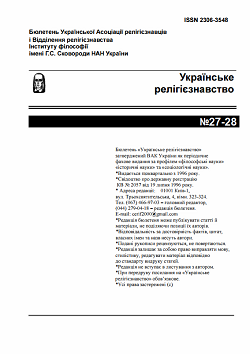The experience of self-sufficiency in mysticism of the twentieth century
DOI:
https://doi.org/10.32420/2003.27-28.1472Abstract
Mysticism is a religious practice, and philosophical mysticism is a reflection on this practice. They distinguish between theistic mysticism as classical, where the absolute is a personal God, and non-theistic as non-classical, where the personal God is replaced by an impersonal transcendental beginning, such as "Tao" in Taoism, "Shunyata" in Buddhism, or "One" in Neo-Platonism. Both classical (theistic) and non-classical (non-theistic) mysticism suggest the need for mystical practice. But in the second half of the twentieth century, post-theistic mysticism arises, which completely rejects mystical practice and is considered post-classical. The emergence of post-non-classical mysticism in the twentieth century coincides with the emergence of the post-non-classical direction in the general culture, that is, with postmodernism. Both classical, non-classical and post-classical mysticism describe the characteristics of a person's state of self-sufficiency. Only the philosophical mysticism of the classical and non-classical directions connects the emergence of this state of self-sufficiency in the mystic with its practice, and the post-non-classical direction denies this practice.
Downloads
Published
Issue
Section
License
Copyright (c) 2003 © Author of Article

This work is licensed under a Creative Commons Attribution-NonCommercial-ShareAlike 4.0 International License.


